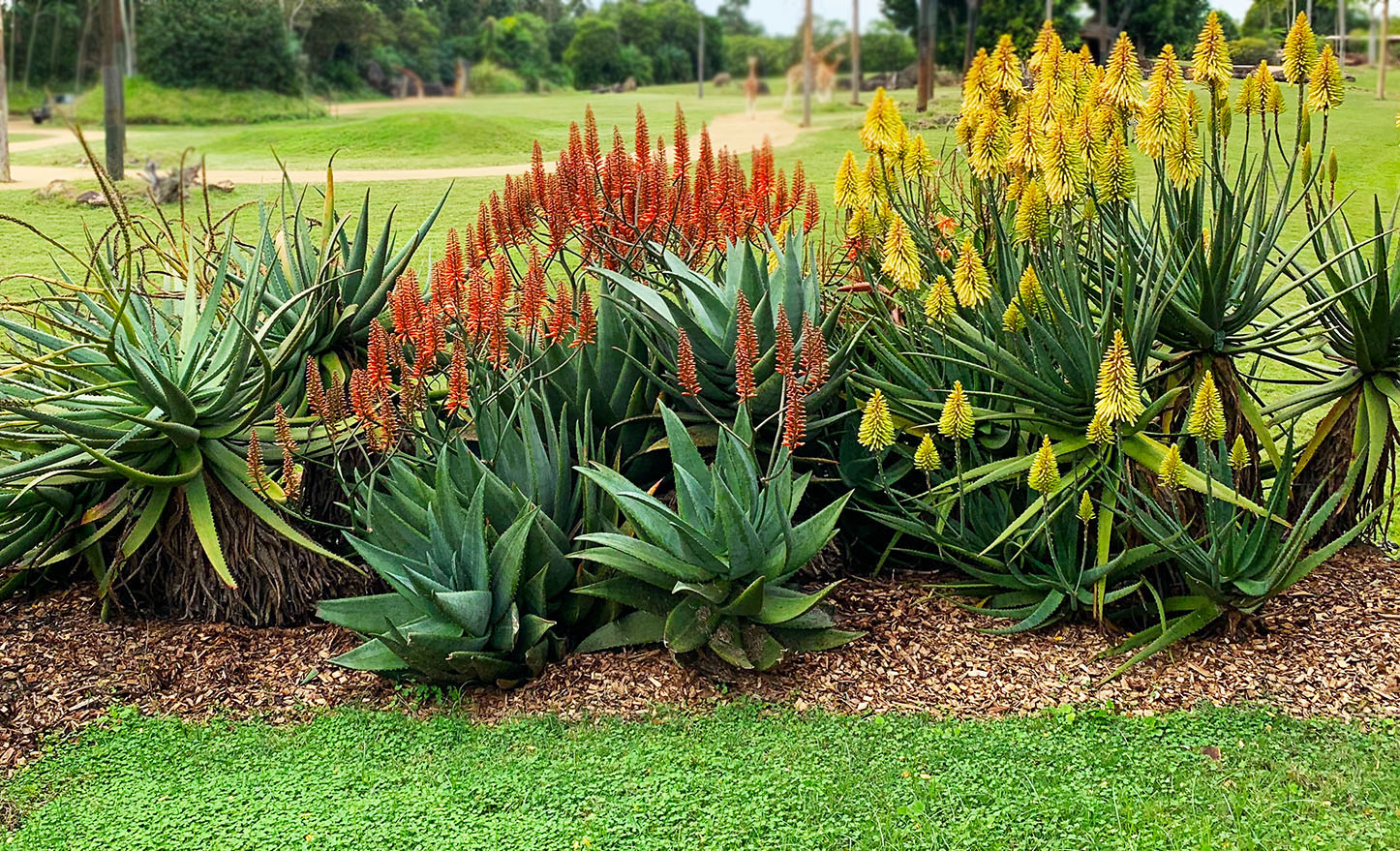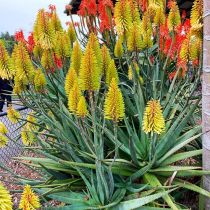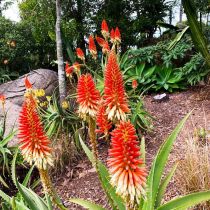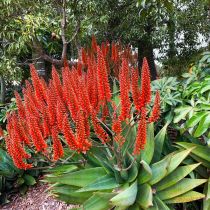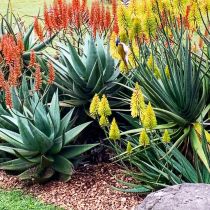Plant of the season - Winter
Aloes
Gayle Parkes presents the 'Plant of the season'. She also posts to OGV's Instagram - make sure you check back regularly for her latest post.
Aloe is a genus from the family Asphodelaceae containing over 550 species of plants. The most widely known species is Aloe Vera, or "true aloe", so called because it is cultivated as the standard source of so-called "aloe vera" for assorted pharmaceutical purposes. A flowering succulent, the genus is native to Arabia, Madagascar and Africa but is most diverse in South Africa….Wikipedia.
I know! I know! I do go on about aloes, but honestly, I have fallen in love with these winter stars that light up our bleak vistas in Victoria’s chilly winters. After visiting Nioka, a garden we opened in Research in late May, I gained further insight into the many varieties that flower at different times of the season, therefore extending our pleasure of aloes. I also learnt that, if you have room, planting them in swathes and en masse is the way to go. What a magnificent sight when grouped together and in their full flowering stage!
Being among the most voluptuous and showy of succulents, there are hundreds of species with various forms and sizes, including small, dainty flowering aloe, stemless succulent rosettes just a few inches tall, to much larger species of flowering tree aloe.
These good do-ers are some of the toughest, most reliable, un-demanding and striking landscape plants available. Aloes are evergreen, with architectural waxy, juicy foliage that can be decoratively toothed or almost smooth, vibrantly green, or blue or grey. Frosts, or cool winter temperatures, can often darken or tinge the foliage of some species with red - a wonderful seasonal bonus.
The inflorescence (bloom spike) of an aloe consists of numerous tubular flowers that open from the base upward. All shades of red and orange predominate; yellow, cream and pink are less common. Their spectacular, vivid flowers are a significant reason to grow these rewarding showy plants and the birds love to feast on their sweet nectar. And who doesn’t love birds in the garden? Most aloes flower from autumn to spring, making them essential ingredients for winter gardens.
Able to withstand the harsh Australian climate by storing water and food within their swollen leaves and roots, aloes like plenty of sunshine and excellent drainage. When it comes to pests and diseases, they are really trouble free. The biggest problem is root rot, particularly if they are grown in clay soils. Work plenty of gravel and sand into the soil, add gypsum and grow them in a raised bed or on a mound. Don't over water them.
Aloes are a great choice for the smaller garden too as they grow contentedly in containers which look really great. Use a ready-made cactus and succulent mix for best results when planting in pots and make sure to allow the soil to dry out between waterings. Happily, these gems are becoming more readily available in our garden centres. I purchased quite a few from the plant stand at Nioka and have popped them into terracotta pots. Topped off with a sprinkling of gravel, they look brilliant! They have flowered for weeks now with new spikes coming. With all of the beautiful planters that are available these days we can let our imagination go wild for that hot spot in the garden.
Or perhaps you might try designing a new aloe bed in your garden, mixed in with other succulents, they will be sure to survive our hot summers.
Either way, you can’t go wrong. Grab yourself an aloe or two today!

